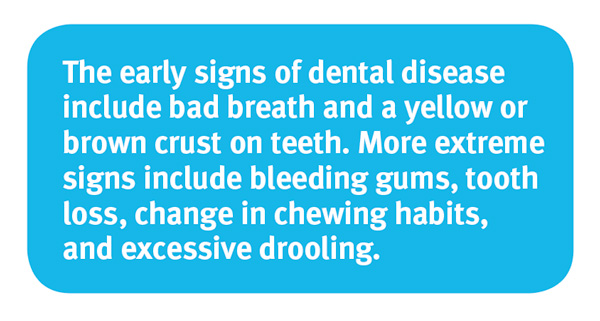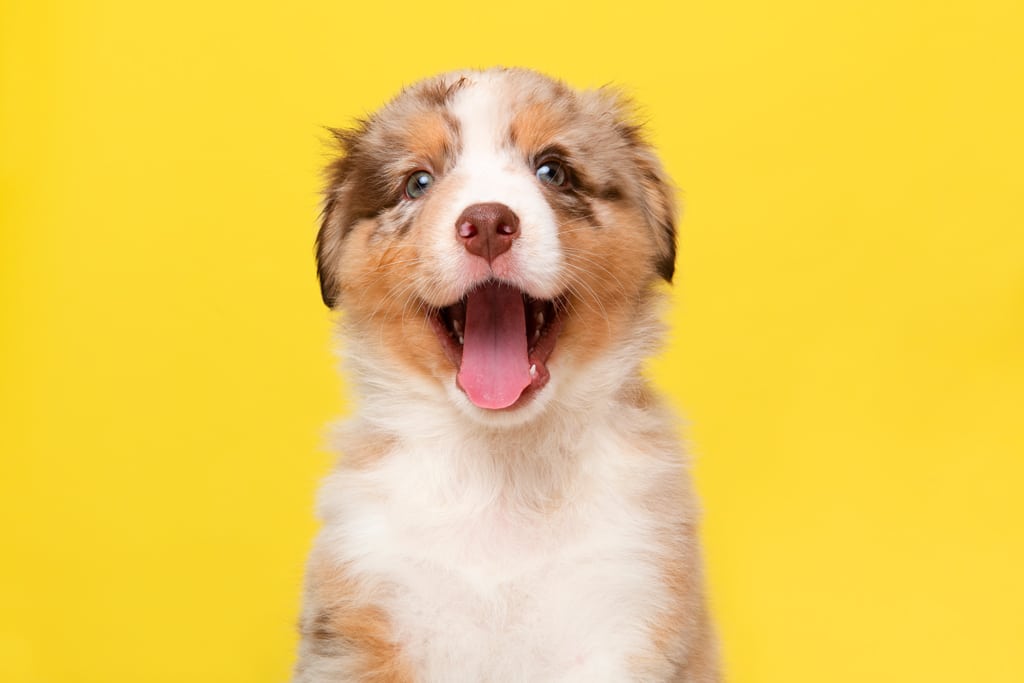- Dog CareDog LifeCommunity
- Photo Contest
Photo Contest- Giveaways
The Safe & Effective Alternative To Brushing Your Dog’s Teeth
Have you ever noticed a slimy or fuzzy feeling on your teeth and wondered what it’s caused by? That slimy plaque layer is actually a group of microorganisms, collectively called a biofilm. A biofilm is a community of bacteria that protect themselves by bonding together, making them very difficult to remove. Yuck, right?
Luckily, you brush your teeth (or at least we hope you do!), but what about your dog? While plaque in your pup’s mouth may not keep you awake at night, it can have damaging long-term effects on your dog’s overall health. Plaque biofilm can harden into tartar, which can lead to more serious conditions, such as periodontal disease. Early signs of periodontal disease are bad breath, bleeding gums, and tooth loss.
To keep your dog happy and healthy, early removal of biofilm buildup is vital—left untreated it can lead to expensive veterinary dental work and pain and suffering for your pet. If you and your dog struggle with daily tooth brushing, try a product such as the water additive from Oxyfresh. Your paw-tner can have fresh smelling breath and improve his oral hygiene, even if he hates brushing! Just add one capful of Oxyfresh Premium Pet Dental Care Solution, Pet Dental Water Additive to your pet’s water bowl each day and you’ll help eliminate pet breath while fighting tartar and plaque buildup. The non-toxic pet dental aid has no flavor additives and is dye and scent free, so your best bud will never know he’s using it
Why You Should Be Concerned About Your Dog’s Dental Health
Despite the fact that periodontal disease affects an incredible 80 percent of all dogs by three years of age, many of us neglect our dog’s dental health. But know this: the health of your dogs’ mouth directly affects their quality of life, behaviour, and even the length of their life.
We brush our teeth twice a day because plaque can form on a tooth’s surface in as little as two hours! The same goes for our pups’ mouths. If left undisturbed, plaque grows thick with bacteria and, as it accumulates minerals from your dog’s saliva, forms tartar, which is much harder to remove and must be done by a vet.
The next stage of dental disease is inflammation of the gums, or gingivitis, which can quickly progress to early periodontitis if not treated. Periodontitis is caused by the body’s inflammatory response to oral bacteria. The entire gum becomes inflamed and swollen, which leads to pain and noticeably bad breath. The disease progresses to moderate periodontitis where infection and tartar are destroying the gums, causing them to bleed; eating becomes difficult. At this stage, with the correct treatment, the disease still may be reversible. In the final stage, advanced periodontitis, a chronic bacterial infection is destroying the gum, teeth, and bone. Bacteria can spread through the bloodstream throughout the body, damaging the kidneys, liver and heart. At this point, the disease is irreversible.
Though some of the factors associated with dental problems are unavoidable, such as age and breed (flat faced and short nose breeds can suffer from overcrowded mouths), it’s up to you to do everything you can to protect your dog’s teeth.
All it takes is a few minutes of daily home dental care to help prevent the plaque and tartar build-up that cause periodontal disease. To maintain oral hygiene, most dogs will require some professional dental work but daily brushing minimizes these expensive visits and protects your dog’s mouth between cleanings.
How To Brush Your Dog's Teeth
1. Set the Routine Choose the same time and day to brush their teeth. At the scheduled time, go to the location and call your pup. When she comes, use your forefinger and thumb to gently lift her lip to reveal her gums and reward her with a taste of pet toothpaste.
2. Taste the Paste Once your dog is okay with Step One, wrap your finger with gauze (or use a finger toothbrush) and gently rub the toothpaste over the teeth and gums.
3. Trust the Brush Graduate to a pet toothbrush. Put paste on the brush and let your dog lick it off. Repeat daily until they don’t hesitate at the sight of the brush.
4. Toothbrush Time Place a small amount of toothpaste on the brush and start to brush the teeth and gums gently, finishing with the bottom front teeth. Focus on the outside of the teeth as this area is most prone to plaque and tartar.
Remember, routine is key! With plenty of patience, consistency, and praise, your dog will soon come to accept daily truth brushing as a part of their regular daily routine. A minute or two of daily brushing will have a huge, positive impact on your dog’s overall health and happiness, and will likely save you money at the vet, too!
Dogify Your Inbox
Sign up for the FREE Modern Dog Magazine newsletter & get the best of Modern Dog delivered to your inbox.
"*" indicates required fields
By clicking the arrow, you agree to our web Terms of Use and Privacy & Cookie Policy. Easy unsubscribe links are provided in every email.
 Despite the fact that periodontal disease affects an incredible 80 percent of all dogs by three years of age, many of us neglect our dog’s dental health. But know this: the health of your dogs’ mouth directly affects their quality of life, behaviour, and even the length of their life.
Despite the fact that periodontal disease affects an incredible 80 percent of all dogs by three years of age, many of us neglect our dog’s dental health. But know this: the health of your dogs’ mouth directly affects their quality of life, behaviour, and even the length of their life. 